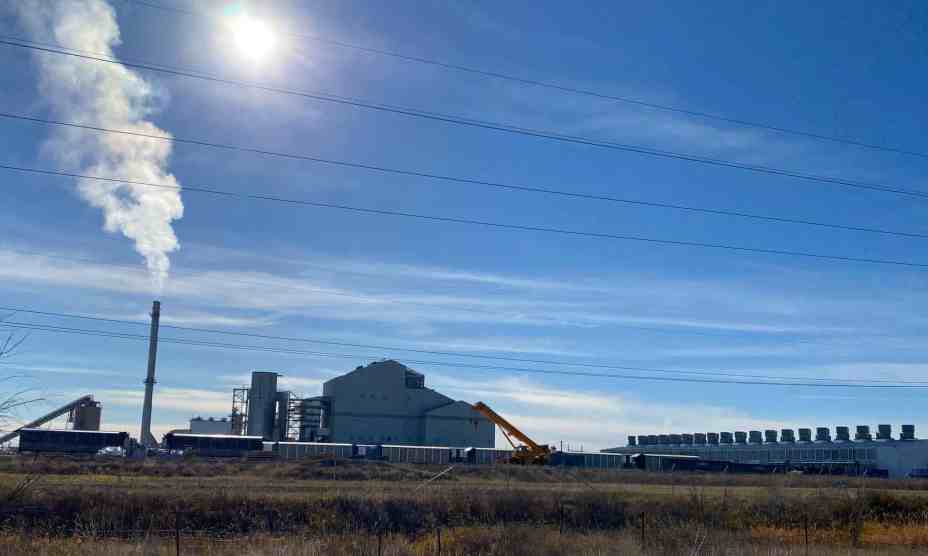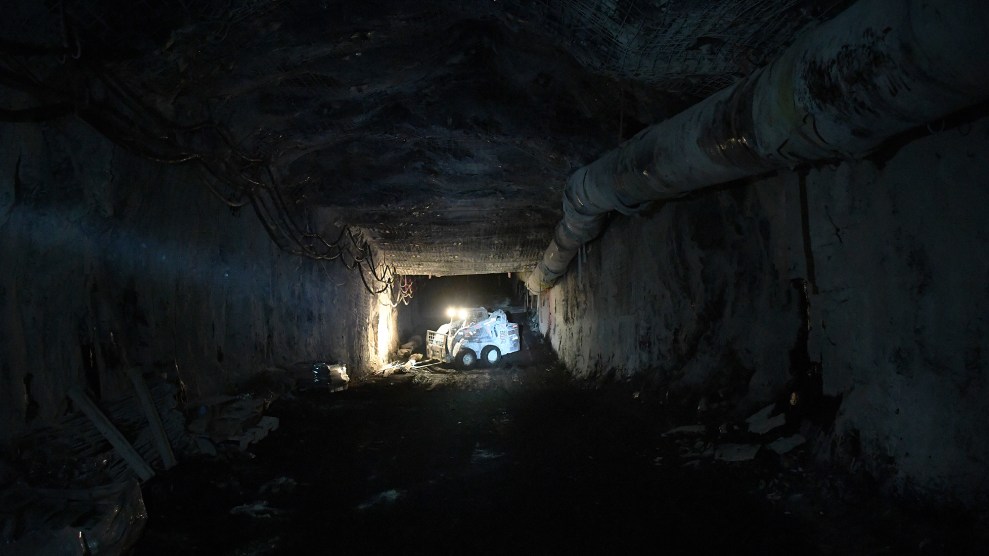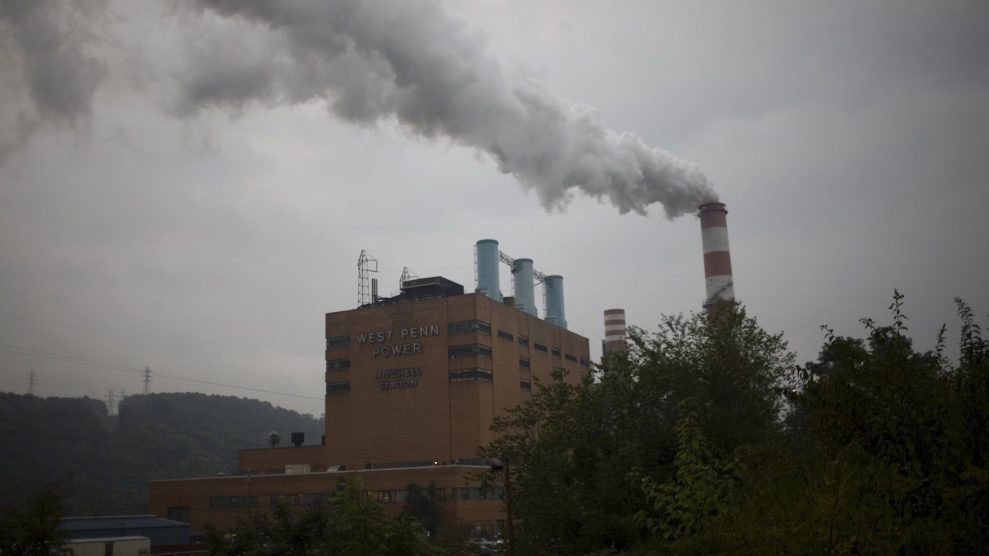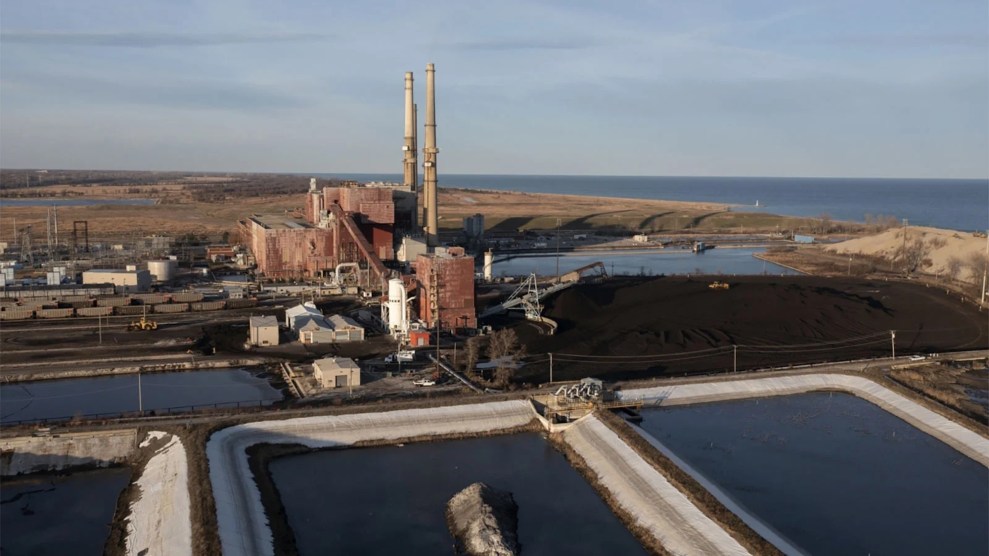
Erin Hooley/Tribune News Service via Getty Images/Grist
This story was originally published by Grist and is reproduced here as part of the Climate Desk collaboration.
When Dulce Ortiz wants to enjoy the beauty of Lake Michigan, walk in a green space, or see and touch the water, she has to leave her neighborhood, even though the second-largest of the Great Lakes is in her backyard.
Ortiz lives in Waukegan, Illinois, a suburb about an hour north of Chicago that has a lurid history of toxic waste. With a population of only 88,000, the city has five Superfund sites, many of them found along the Lake Michigan shoreline.
And that’s not even counting the large pools of toxic materials leftover from decades of burning coal in Waukegan. Deep pits of hazardous sludge sit along the shores of Lake Michigan, the watershed for roughly 12 million people.
Ortiz, co-chair of the local environmental justice organization Clean Power Lake County, calls these coal waste sites a “ticking time bomb” vulnerable to future spills, with the potential to harm millions.
Waukegan’s coal-fired power plant, which closed last year, sits a little over a mile from an elementary school, a public park, and single-family housing intermixed with local taquerias and bakeries. The city is majority Latino according to US Census data.
Now, a permanent solution to coal industry debris could soon be a reality.
When coal is burned for fuel, it produces a waste product known as coal ash. This burnt byproduct is stored in large, manmade landfills commonly called ponds or pits. The material is toxic and contains at least 17 heavy metals and radioactive materials, such as mercury, cadmium, and arsenic, which cause cancer and birth defects, as well as heart and lung diseases.
In May, the US Environmental Protection Agency proposed new regulations to stop a loophole that has allowed historic coal ash ponds to go unmonitored for years. The new ruling would force energy companies and other owners of the coal ash ponds to clean up inactive sites.

Dulce Ortiz is trying to get rid of toxic coal ash ponds in Waukegan, Illinois.
Erin Hooley/Tribune News Service via Getty/Grist
Coal ash has an infamous toxic history. The 2008 Kingston, Tennesse, coal ash spill—where over 5 million cubic yards were spilled into surrounding waterways and caused the death of cleanup workers years after the event—is regarded as one of the nation’s worst industrial disasters.
The regulation of coal ash at the federal level is fairly new. In 2015, the EPA issued the first national minimum standards for new and operating coal ash ponds, leaving out hundreds of legacy sites that haven’t received coal ash since before 2015.
The recently announced EPA rule change comes on the heels of litigation from the nonprofit environmental justice organization Earthjustice. Lisa Evans, senior counsel there, told Grist that the newly proposed ruling goes a long way to prevent future disasters, calling current regulations on legacy coal ash ponds “irrational, dangerous, and reckless.”
“The EPA made a lot of compromises in the 2015 rule and came out with the weakest rule it could have created,” said Evans.
Coal ash ponds are notorious for leaking into surrounding bodies of water and soil. According to a report last year, roughly 90 percent of coal plants have tainted the surrounding groundwater.
That same report also found that approximately 70 percent of decommissioned power plants with accompanying coal ash ponds are found in low-income communities or majority-nonwhite census tracts.
Ortiz said that in addition to fear of toxic materials slowly seeping into Lake Michigan, she worries climate change is speeding up the chance for future disasters.
In a report published last year, the Midwest environmental advocacy nonprofit Environmental Law and Policy Center found that Lake Michigan has 12 toxic waste sites that are particularly at risk of spilling and harming nearby communities, thanks to lake erosion and increased storms fueled by climate change.
Waukegan was identified as one of the sites, alongside other coal ash ponds in Indiana and Wisconsin. The Waukegan Generating Station no longer operates its coal-fired power stations, but its waste remains. Midwest Generation, a subsidiary of national energy company NRG Energy, owns the power plant.
Two coal ash ponds at the plant are in the process of being cleaned up. According to Midwest Generation, one pond will be capped and covered, a process where the pond is filled with soil and sediment and covered with plastic, and remains in place. The other pond will have its materials excavated and moved to a permitted disposal landfill.
Both ponds are currently regulated by the EPA and the cleanup process is on hold as the company awaits state permitting approval. A third site at the Waukegan plant is a historic coal ash waste site that has not received coal ash since 1977, according to Midwest Generation. This would classify the site as a legacy coal ash site and its cleanup would likely be regulated under the new EPA proposal.
In a statement, Midwest Generation said it is still reviewing the EPA’s proposal and “will continue to be committed to compliance with applicable laws and will comply with any final rules related to legacy (coal) ash areas.”
The decommissioning of coal-fired power is part of an overarching Illinois initiative to be coal-free by 2045. Illinois was the first state in the Midwest to legislate the phaseout of coal-fired power plants and focus on renewable energy and environmental justice with the 2021 Climate and Equitable Jobs Act.
Alongside proper environmental cleanup and regulation, Ortiz said the issue of environmental justice is key to the future of Waukegan.
The still-standing coal plant in Waukegan is a “symbol of pain and suffering” for Ortiz. She said it’s a reminder that Waukegan residents, specifically Black and Latino, have been sacrificed in the name of industry profit.
She said when visiting other, affluent and majority-white suburbs in the region, the communities along Lake Michigan have full use of the natural resource and aren’t exposed to the dangers of legacy coal pollution. “Why can’t we have that as well? Why can’t our children have an easily accessible lakefront?” she said.
Coal may not be synonymous with the Midwest, but the region has an abundance of coal ash ponds. According to data from Earthjustice, Indiana, Illinois, and Ohio are among the top five states with regulated and unregulated coal ash ponds. Additionally, there are 88 coal ash dump sites within two miles of at least one of the Great Lakes, the water source for an estimated 30 million people.
Following the curve of Lake Michigan, a city in northwest Indiana echoes Waukegan’s past, and the residents hope new regulations could chart a future without polluting industries in their backyard.
Michigan City, Indiana, is located roughly 100 miles from Waukegan and is home to 32,000 residents, a third of them Black.
Indiana has the largest number of operational coal plants in the country and 100 coal ash sites. According to Earthjustice estimates, half of these sites are currently unregulated.
Ashley Williams is the executive director of Just Transition Northwest Indiana, a nonprofit environmental justice organization based out of Michigan City.
She said the contamination is a “silent crisis” with roughly 2 million tons of toxic coal ash sitting near Lake Michigan. Michigan City’s coal-fired power plant sits in the shadow of nearby playgrounds, homes, and public beaches.
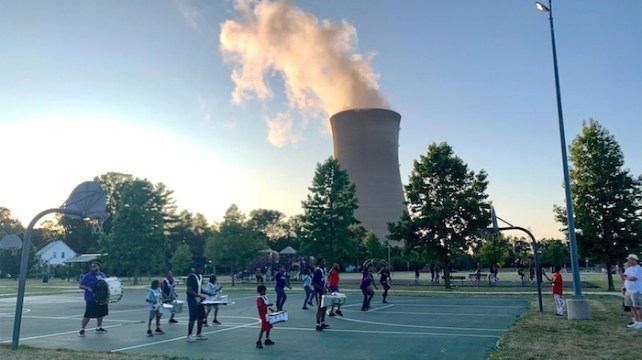
A cooling tower for a coal-power plant overlooks this playground in Michigan City, Indiana.
Just Transition Northwest Indiana
The Michigan City Generating Station, owned by the Northern Indiana Public Service Company, or NIPSCO, is still in operation. The coal plant has five ash ponds that are regulated under current federal rulings.
Like Waukegan, the NIPSCO site includes one currently unregulated man-made coal ash fill, which contains sediment, sand, and coal ash, and is used to buffer the coal plant from Lake Michigan’s waters.
The infrastructure that stops this material from spilling into Lake Michigan is aging and at risk of a “catastrophic release,” according to an engineering study authorized by Earthjustice.
According to Energy News Network, the seawall site contains roughly two million cubic yards of coal ash and areas of the pond go as deep as 40 feet in the ground. A NIPSCO spokesperson disputed the estimated amount of coal ash on the historic site, which the news site said is based on NIPSCO documents. In a statement to Grist, NIPSCO said there is an estimated 109,000 tons of leftover coal material outside of the ponds. This seawall location would likely be regulated under the new EPA proposal.
In a statement, NIPSCO said it will “continue to monitor the progression of EPA’s latest proposal for regulations related to coal ash management and how this might apply to the work we’re already doing to comply with current regulations.”
Williams said the region’s history of industrial pollution is buried everywhere. The nearby town of Pines, Michigan has been in a longstanding cleanup and legal battle dating back to the 1970s. For decades, NIPSCO dumped coal ash waste in the town’s landfill, used it to build roads, and gave it to residents to fill their yards and homes.
The NIPSCO coal-fired power plant will close as early as 2026. Williams said she wants to ensure the site doesn’t get developed and turned into another site of environmental injustice.
She said Just Transition Northwest Indiana advocates for a statewide shift in energy production and wants both youth and current industry workers to be at the forefront of planning the future of the region.
“We’re trying to reclaim our power from polluters,” she said. “What’s happening in Michigan City is the beginning of what a just national transition could be.”
